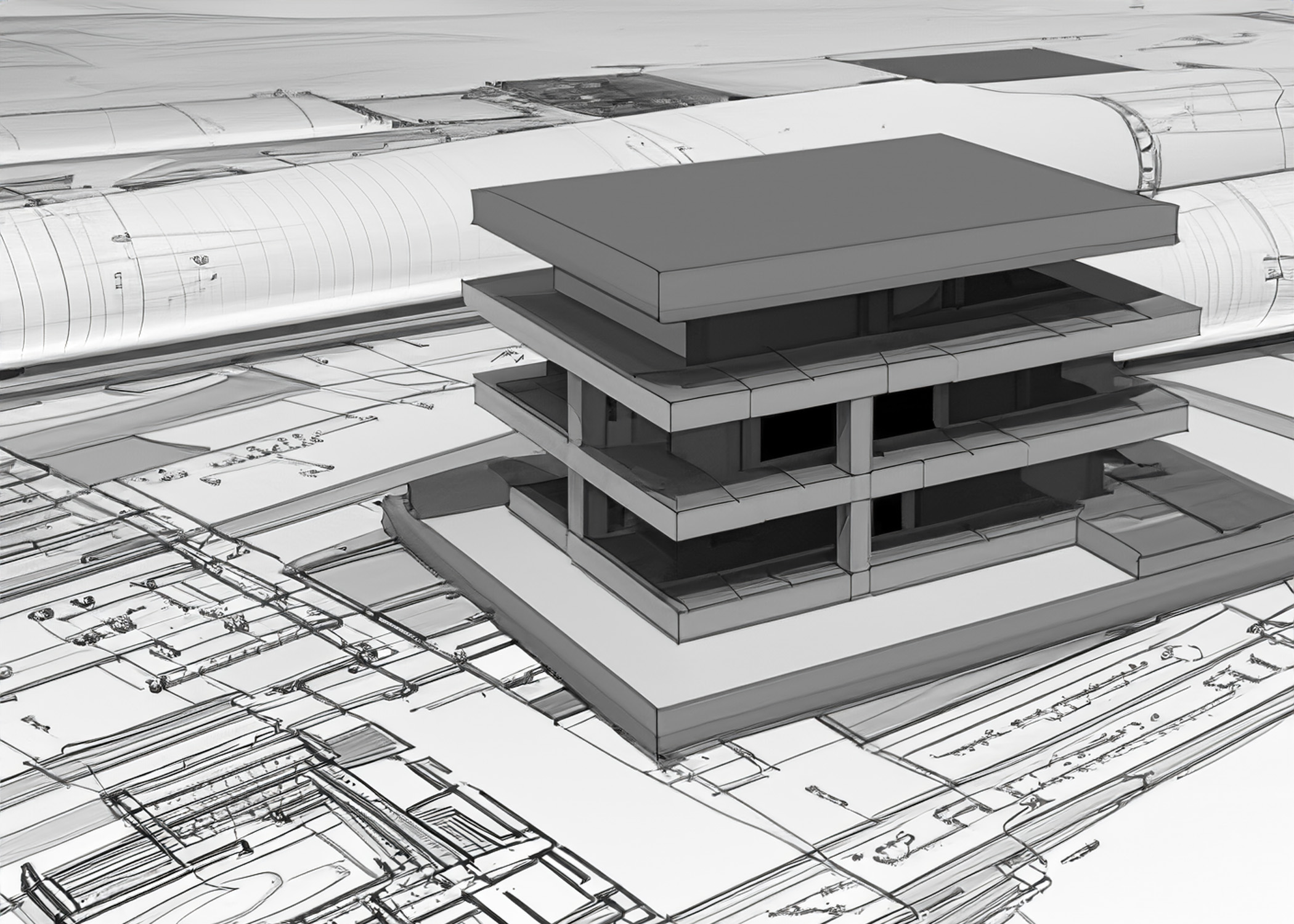Revolutionizing Construction Details: The Role of Artificial Intelligence

Architecture has long relied on elaborate detailing to bring designs to life. From ornate facades to elaborate structural elements, construction detailing is both a functional necessity and a creative expression. However, the traditional methods of detailing have often been time-consuming and labor-intensive, limiting the scope of innovation.
Following the artificial intelligence (AI) bloom, an array of revolutionary tools and techniques have been created, transforming the way construction details are made and pushing the boundaries of creativity and efficiency. This article explores the transformative impact of AI on construction detailing, from generative design to material optimization, and examines the implications of this technological revolution on the future of architecture and construction.
Historical Context
The history of construction detailing is a story of innovation and craftsmanship, from bespoke ornamentation elements to joinery details as well as material finishes and fixture fittings, architects and engineers have always found pioneering ways to draw these complex parts in each of their projects. Even when they were constrained by the limitations of traditional drafting and modeling techniques, construction professionals used detailing to address issues such as material finishes, building techniques, junction connections, furniture and even sustainability features like solar panels and green roofs.
Italian architect Carlo Scarpa drew his staircase joinery with color pencils and rulers, while modernist Ludwig Mies van der Rohe used ink on paper to communicate his ideas on how to join brick and glass together.
Still, it wasn’t until the introduction of computational tools in architecture that heralded a new era of possibilities, allowing AEC professionals to explore complicated forms and construction details with greater precision and efficiency. BIM technology, 3d computational modeling and even digital 2d drafting allowed architects and engineers to generate, optimize and analyze construction details with greater speed and sophistication, establishing a more immediate connection between drawings and materialized projects.
The AI Bloom
Since 2021, AI technology is becoming gradually integrated to the AEC industry. In just a few years, it has truly revolutionized the field, enabling construction professionals to harness the power of algorithms and bots to create construction details with unprecedented precision and quality. AI technologies such as generative design, and machine learning have rapidly gained traction. Generative design, in particular, has emerged as a powerful tool for construction detailing, allowing architects and engineers to define high-level goals and constraints and let algorithms explore vast design spaces to find optimal solutions.
In parallel, parametric design has also transformed construction detailing, enabling the creation of complex, adaptive structures that respond dynamically to changing conditions. By embedding parameters and relationships into their designs, architects and engineers can explore a wide range of possibilities and rapidly iterate on their ideas, leading to more responsive solutions. Finally, AI tools primarily used for representation can produce schematics and even animation assemblies, enhancing the communication of construction detail drawings.
AI Application in Construction Detailing
The benefits of using AI tools for detail drawings are vast and varied, spanning everything, from form generation to material selection and optimization. Generative design algorithms can automatically produce and optimize construction details based on a set of design goals and constraints, allowing architects and engineers to explore a multitude of design options and quickly identify the most promising solutions. Using text-to-image prompts, they can train AI to design material connections, joint intersections, and assembly sequences. For example, they can identify certain material specifications and how those interact with a particular project site and afterwards describe possible methods of construction to achieve the desired result.
Parametric design techniques, meanwhile, enable AEC professionals to create intricate, responsive construction details that adapt to the specific requirements of a project. By parameterizing key aspects of their detail designs, they can explore how changes to one element affect the overall form and performance of a structure, leading to more adaptable construction detail drawings. These AI algorithms can analyze vast datasets of functional performance data, environmental conditions, and user preferences, to identify the most promising design solutions.
AI technology can also assist in material selection and optimization, helping architects and engineers to identify the most suitable materials for a given application based on factors such as performance, cost, and sustainability. By analyzing sufficient data on material properties and performance characteristics, AI algorithms can help construction professionals make more informed decisions about which ones to use and how to optimize their construction detailing for maximum efficiency and durability.
Future Possibilities
There is no doubt that the potential of AI in the AEC sector is immense. In a few short years, countless AI tools and applications have changed the way architects and engineers conceive, test, draw and communicate construction details. For instance, emerging trends such as the integration of AI with other technologies like virtual and augmented reality promise to further enhance the capabilities of AEC professionals. This integration allows them to create immersive, interactive experiences that push the boundaries of what is possible.
Admittedly, there are several technical challenges to overcome, such as the need for more robust datasets and algorithms that can handle the complexity of architectural design, as well as the risk of design homogenization. Still, AI bridges the gap not only between drawing and implementation practices but also brings together vast amounts of knowledge and information necessary to design a successful construction details that strikes the perfect balance between aesthetics and functionality. In other words, AI technology unlocks new opportunities for architects and engineers to dive deeper into their designs and influence their realization on a “human-scale” level.
Related Posts
Get your details closer to design-ready than they’ve ever been







